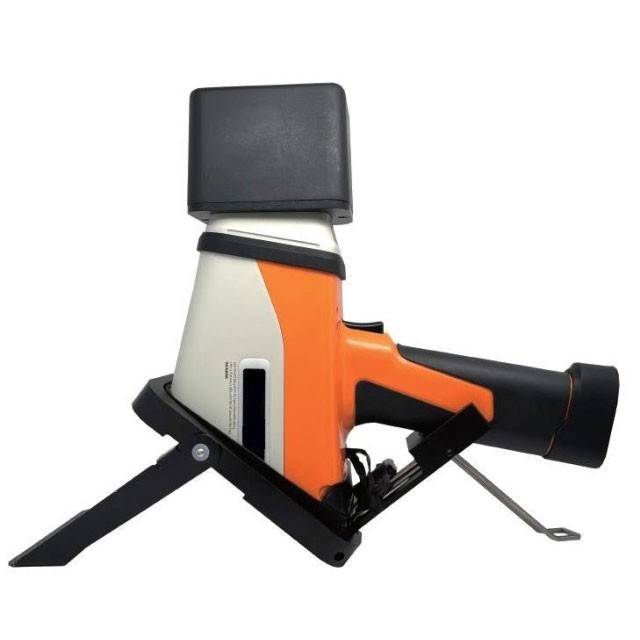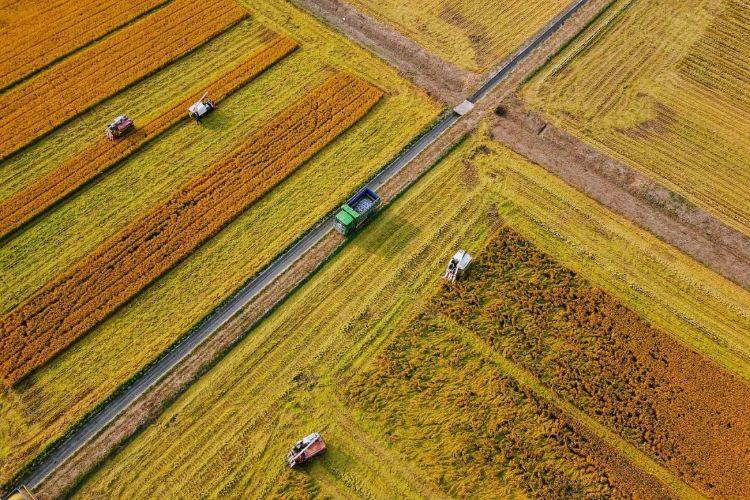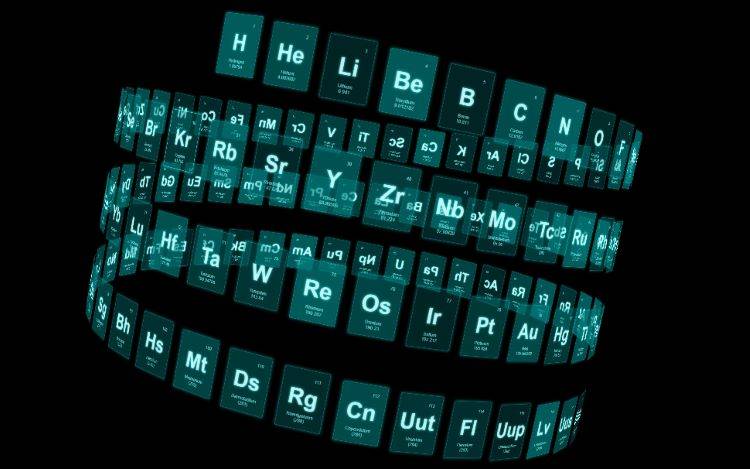Introduction to Handheld Soil Analyzers
In recent years, the environmental sector has witnessed a surge in the use of portable and efficient tools that can be used for on-site soil analysis. Among these, handheld soil analyzers have gained significant importance due to their ability to provide rapid and accurate results. In this comprehensive guide, we will explore the features, benefits, and applications of the AXR600 handheld soil analyzer, which stands out for its ability to detect heavy metals and minimize the need for laboratory analysis. This guide will also shed light on the various sectors where these analyzers are being used to identify hazardous pollutants and guide remediation efforts. We will also discuss the comparison between handheld soil analyzers and other analytical tools like handheld XRF analyzers. So, let's delve into the capabilities and benefits of using handheld soil analyzers like the AXR600.
Key Features of AXR600 Handheld Soil Analyzer
The AXR600 Handheld Soil Analyzer is a revolutionary tool designed for rapid on-site analysis of soil samples. Its key features include in-situ measurement capabilities, fast results in seconds, minimal training requirements, superior analysis performance, low maintenance costs, and user-friendly software.
In-situ Measure and Screen: The AXR600 allows for rapid on-site screening of heavy metals and other contaminants in soil. This capability significantly reduces the number of samples that need to be sent to laboratories for analysis, thereby cutting down on analysis costs and time. The analyzer is lightweight, weighing only 1.5kg including the battery, which makes it highly portable and suitable for testing anywhere at any time. Its ergonomic design further enhances user comfort during operation.
Fast Results in Seconds: With the AXR600, users can obtain stable and accurate results in approximately 10 seconds. This rapid analysis covers over 30 elements simultaneously with minimal sample preparation. The 'point and shoot' functionality makes it incredibly efficient for field use, ensuring quick decision-making and immediate action when necessary.
Minimal Training Required: The AXR600 is designed with user-friendliness in mind. It comes with intuitive software that makes it easy to use right out of the box, requiring minimal operator training. This feature is particularly beneficial in environments where expertise in analytical equipment may be limited, ensuring that the device can be utilized effectively by a wide range of users.
Superior Analysis Performance: The analyzer boasts a high-performance miniature X-ray tube and intelligent multi-position filters, which are specially optimized for key elements. This technology ensures that the AXR600 achieves superior performance in analyzing various elements, providing reliable and precise data.

Low Cost of Maintenance: The AXR600 is built to withstand harsh environmental conditions, featuring a rugged design that meets IP54 standards for dustproof and waterproof capabilities. It can operate continuously and normally in temperatures ranging from -10°C to 50°C, making it robust enough to handle environmental challenges on site. This durability significantly reduces the maintenance costs associated with the device.
User Friendly Software: The software accompanying the AXR600 is designed with an intuitive interface, making it easy to use and allowing for easy export of data for various purposes. The software also includes advanced features such as element top, element correction, over-standard display, humidity correction, and fingerprint spectrum, enhancing its functionality and utility in field applications.
In summary, the AXR600 Handheld Soil Analyzer is a versatile and powerful tool that combines ease of use with high-level analytical capabilities. Its features are tailored to meet the needs of various applications, from environmental testing near pollution sources to geological surveys, ensuring accurate and rapid results with minimal operational overhead.
Advantages of Rapid On-Site Soil Screening
The AXR600 handheld soil analyzer revolutionizes the field of environmental testing by offering rapid on-site screening capabilities for heavy metals and other contaminants. This innovative tool significantly reduces the number of samples that need to be sent to laboratories for analysis, thereby cutting down on both analysis costs and time. The benefits of using the AXR600 for on-site screening are manifold and profoundly impact the efficiency and effectiveness of soil contamination assessments.
One of the primary advantages of the AXR600 is its ability to provide fast results in just seconds. With a simple point-and-shoot operation, users can obtain stable and accurate readings for over 30 elements simultaneously. This rapid analysis capability not only saves time but also reduces the need for extensive sample preparation, making the screening process more efficient. The speed of the AXR600 allows for immediate decision-making on-site, which is crucial for the timely delineation of contaminated areas.
Moreover, the AXR600 is designed with user-friendliness in mind. It requires minimal training and can be operated immediately out of the box, thanks to its intuitive software interface. This ease of use ensures that even non-specialist personnel can effectively operate the device, expanding its accessibility across various sectors including environmental testing, mining exploration, and landscaping projects.

The innovative functional design of the AXR600, including its soil moisture correction function, enhances the accuracy of the testing results. This feature automatically adjusts the analysis based on the soil moisture, significantly reducing the influence of varying moisture levels on the readings. Such precision is crucial in ensuring that the data collected on-site is reliable and representative of the true contamination levels.
In terms of practical applications, the AXR600 is not limited to soil and sediment screening. It is also widely used in environmental testing near pollution sources, river slough pollution projects, and geological surveys. The device's ability to detect heavy metal pollutants in various mediums, including dust, filters, and lead paint, makes it a versatile tool for comprehensive environmental inspections and evaluations.
The AXR600's handheld design, weighing only 1.5kg including the battery, enables it to be used anywhere at any time. Its ergonomic design further enhances user comfort, making it suitable for extended periods of use in the field. This portability and ease of use are critical for conducting large-scale screenings in remote or hard-to-reach areas.
Innovative Function Design: Soil Moisture Correction
The AXR600 handheld XRF analyzer is equipped with an innovative soil moisture correction function that significantly enhances the accuracy of soil testing results. This feature is particularly crucial in geochemical and environmental testing, where soil moisture can often skew analysis outcomes. By automatically adjusting the analysis based on the moisture content of the soil, the AXR600 ensures that the data collected is not only reliable but also reflective of the true composition of the soil.
How Soil Moisture Correction Works
The soil moisture correction function in the AXR600 operates by integrating advanced algorithms that assess and adjust the analytical readings in real-time. When the XRF analyzer is used to test soil samples, it not only measures the elemental composition but also detects the moisture levels. This dual functionality is crucial as it allows the device to compensate for the influence of water content on the X-ray absorption and scattering, which are key factors affecting the accuracy of XRF analysis.

Benefits of Soil Moisture Correction
-
Enhanced Accuracy: By correcting for soil moisture, the AXR600 provides more accurate and consistent results, which are essential for making informed decisions in mining, environmental remediation, and agricultural sectors.
-
Reduced Need for Sample Drying: Traditionally, soil samples needed to be dried before analysis to avoid the interference of moisture. The AXR600's soil moisture correction eliminates the need for this time-consuming step, thereby speeding up the analysis process and reducing the overall cost of testing.
-
Improved Field Efficiency: With the ability to correct for moisture on-site, the AXR600 allows for immediate and accurate analysis in the field. This capability is particularly beneficial for large-scale projects where rapid turnaround of results is critical.
-
Versatility in Various Environments: The soil moisture correction function ensures that the AXR600 can be used effectively in diverse environmental conditions, from arid regions to tropical rainforests, without compromising the accuracy of the results.
Applications of Handheld Soil Analyzers in Various Sectors
Handheld soil analyzers, particularly those utilizing XRF (X-Ray Fluorescence) technology, have revolutionized the way various sectors assess and manage soil composition. These devices offer rapid, on-site analysis capabilities that are crucial for decision-making in sectors such as agriculture, mining, and environmental remediation.
Agriculture
In agriculture, the use of handheld soil analyzers is pivotal for optimizing crop production and managing soil health. Farmers and agronomists can quickly assess the nutrient content of the soil, including elements like phosphorus, potassium, and nitrogen, which are essential for plant growth. By providing immediate results, these analyzers allow for timely adjustments in fertilization practices, ensuring that crops receive the necessary nutrients without over-application, which can lead to environmental pollution.

Mining
The mining industry benefits significantly from handheld soil analyzers, particularly in mineral exploration and ore grade control. These devices enable real-time analysis of soil and rock samples, helping geologists and mining engineers to identify valuable minerals and elements such as rare earth elements (REEs), gold, silver, and other base metals. The ability to perform on-site analysis reduces the need for costly and time-consuming laboratory tests, speeding up the decision-making process and enhancing operational efficiency.
Environmental Remediation
In environmental remediation, handheld soil analyzers play a critical role in identifying and mapping hazardous pollutants in contaminated sites. These devices can detect heavy metals such as cadmium, mercury, lead, and chromium, which are common contaminants resulting from industrial activities, mining, and improper waste disposal. By providing rapid screening of soil samples, these analyzers help environmental scientists and remediation specialists to delineate contaminated areas and guide the implementation of appropriate cleanup measures. This on-site capability not only reduces the number of samples that need to be sent to laboratories but also expedites the remediation process, thereby minimizing costs and environmental impact.
Conclusion
Handheld soil analyzers are versatile tools that have become indispensable across multiple sectors. Their ability to deliver accurate, real-time data on soil composition and contaminants enables more informed decision-making, enhances operational efficiency, and contributes to environmental sustainability. As technology continues to advance, these devices are expected to become even more sophisticated, further expanding their applications and benefits in various industries.
Comparison with Other Analytical Tools: Handheld XRF Analyzers
Handheld XRF (X-Ray Fluorescence) analyzers are a popular choice for field analysis due to their portability, ease of use, and non-destructive testing capabilities. When compared to other handheld soil analyzers, XRF devices offer distinct advantages and applications that complement traditional methods, enhancing the overall efficiency and accuracy of field analysis.
Reliability and Precision: Handheld XRF analyzers are known for their reliability and precision, often providing results that are comparable to more traditional and destructive methods like fire assay. This capability ensures that users can accurately determine the composition of materials without the risk of damaging valuable samples. For instance, the XRF 200 Benchtop Gold analyzer is designed to assess karat or gold content with remarkable precision, preventing losses from under-karated or counterfeit materials.
Practicality and Safety: Designed for practical use in various environments, including retail settings, XRF analyzers are factory-calibrated and ready for immediate use upon arrival. The closed-beam design of these devices ensures that there is no x-ray exposure to customers or operators, making them safe for use in public spaces. This feature is particularly beneficial in settings where safety and ease of use are paramount.
Detection Capabilities: One of the standout features of handheld XRF analyzers is their ability to detect gold plating and other non-gold substrates efficiently. This capability is crucial in identifying gold-plated items, including those plated on silver, copper, steel, tungsten, and other materials. The non-destructive nature of XRF analysis means that samples remain intact, preserving their value and original state.
Versatility: Beyond gold analysis, XRF analyzers are equipped to handle a wide range of valuable metals and elements. The comprehensive suite of elements that can be detected includes not only precious metals but also various other elements crucial in industrial and scientific applications. This versatility makes XRF analyzers a valuable tool across multiple industries.
Automation and Efficiency: In contrast to manually operated handheld XRF analysis, in-line XRF analyzers like the AXR Scientific In-line XRF analyzer Terra 700 series offer automated solutions that can be integrated with factory production lines. These systems can operate around the clock, providing real-time inspection and quality control without the need for extensive human intervention. This automation not only improves detection efficiency but also significantly reduces labor costs.
In summary, handheld XRF analyzers offer a robust, safe, and versatile solution for field analysis, particularly in the detection and analysis of precious metals and other elements. Their non-destructive nature, coupled with advanced automation capabilities, makes them an indispensable tool in modern analytical workflows, complementing and enhancing traditional methods of analysis.
Future Trends and Innovations in Handheld Soil Analysis Technology
The field of handheld soil analysis technology is rapidly evolving, driven by advancements in detection limits, multi-element analysis, and integration with automation and robotics. These innovations are not only enhancing the accuracy and efficiency of soil testing but also expanding the applications of handheld soil analyzers in various industries, including agriculture, mining, and environmental remediation.
Advancements in Detection Limits
One of the most significant trends in handheld soil analysis technology is the continuous improvement in detection limits for various elements. With the integration of advanced X-ray fluorescence (XRF) technology, such as Silicon Drift Detectors (SDD), these devices can now detect trace amounts of heavy metals and other contaminants that were previously undetectable. This advancement is crucial for environmental monitoring and remediation efforts, where even low concentrations of pollutants can have severe impacts on ecosystems and human health.
Multi-Element Analysis
Handheld soil analyzers are also becoming more adept at performing multi-element analysis, simultaneously detecting over 30 elements in a single test. This capability is particularly beneficial in mining and exploration, where the identification of multiple elements can guide resource extraction strategies and improve the economic feasibility of mining operations. The ability to quickly and accurately analyze a wide range of elements on-site reduces the need for laboratory testing, thereby saving time and reducing costs.

Integration with Automation and Robotics
The integration of handheld soil analysis technology with automation and robotics is another emerging trend that promises to revolutionize soil testing. Automated systems can perform repetitive tasks more efficiently and with greater precision than human operators, reducing the potential for human error. Robotics can also extend the reach of soil analysis into hazardous or difficult-to-access areas, ensuring that no site is left untested due to logistical challenges. This integration not only improves the safety and efficiency of soil testing but also allows for larger-scale and more comprehensive environmental assessments.
Innovative Function Design
Innovations in function design, such as the soil moisture correction function, are enhancing the accuracy of handheld soil analyzers. This feature allows the device to automatically adjust for variations in soil moisture, which can significantly impact the results of soil tests. By reducing the influence of soil moisture, these analyzers can provide more reliable and consistent testing results, which is critical for making informed decisions in agriculture, environmental protection, and urban planning.
In-Situ Measurement and Rapid Screening
The ability to perform in-situ measurements and rapid screening is a key advantage of handheld soil analyzers. Devices like the AXR600 can quickly screen for heavy metals and other contaminants on-site, reducing the number of samples that need to be sent to laboratories. This not only lowers analysis costs and time but also enables immediate response to potential contamination issues, facilitating faster remediation efforts and minimizing the overall impact on the environment.
Conclusion
The future of handheld soil analysis technology is bright, with ongoing advancements that promise to make soil testing faster, more accurate, and more accessible. As these devices continue to evolve, they will play an increasingly important role in environmental monitoring, resource management, and sustainable development. The integration of cutting-edge technologies, such as advanced detection systems, multi-element analysis capabilities, and robotics, will further enhance the utility of handheld soil analyzers, making them indispensable tools for a wide range of applications.
Related Products
- Lab Electrochemical Workstation Potentiostat for Laboratory Use
- XRD Sample Holder X-ray Diffractometer Powder Slide
Related Articles
- Comprehensive Guide to Handheld Lithium Battery Analyzers: Features, Applications, and Maintenance
- Advanced Techniques in Coating Evaluation Using Electrolytic Cells
- Comprehensive Guide to Reference Electrodes: Types, Applications, and Selection Criteria
- Understanding Saturated Calomel Reference Electrodes: Composition, Uses, and Considerations
- Ultimate Guide to Handheld Alloy Analyzers: Features, Applications, and Advantages


